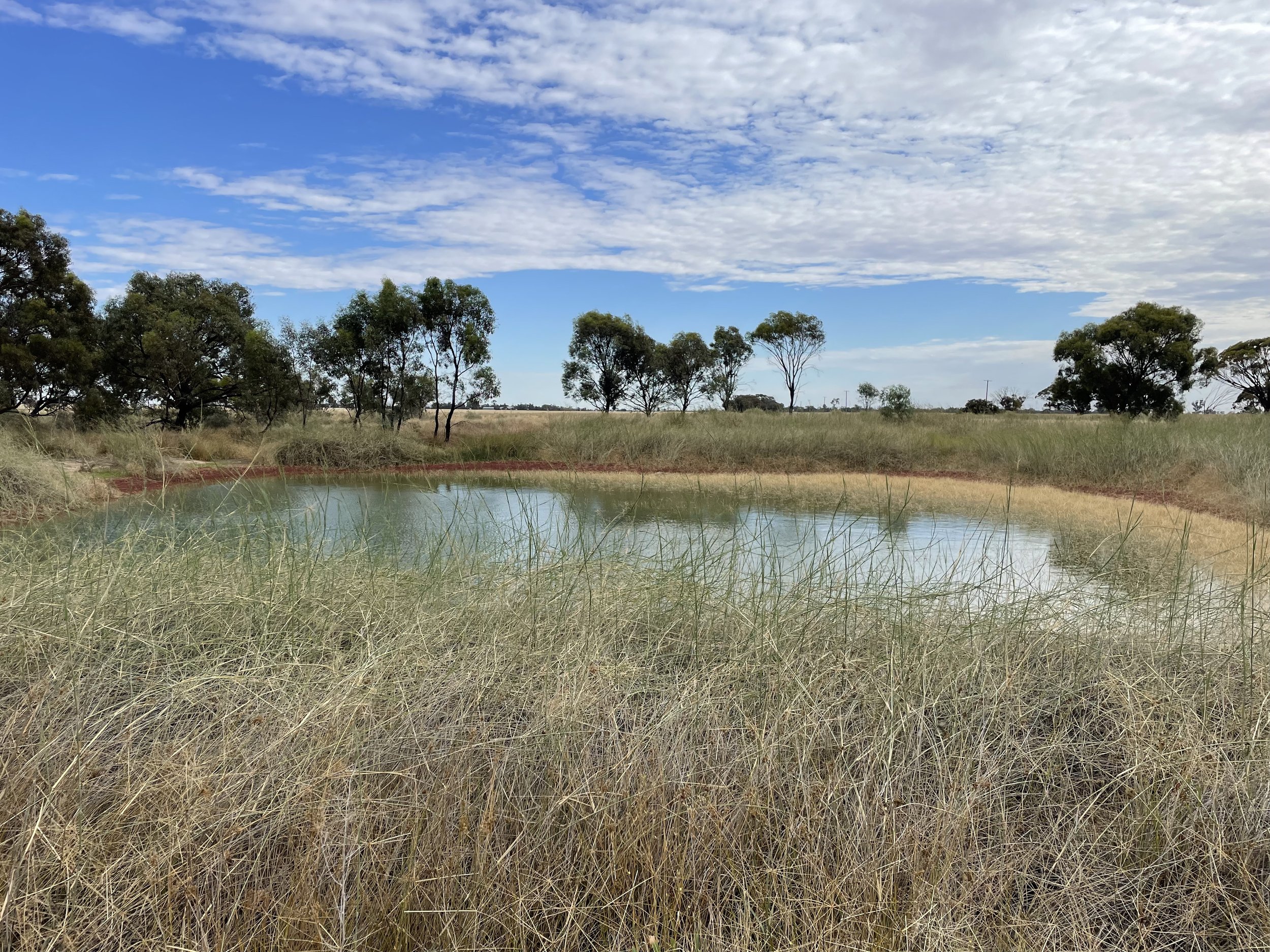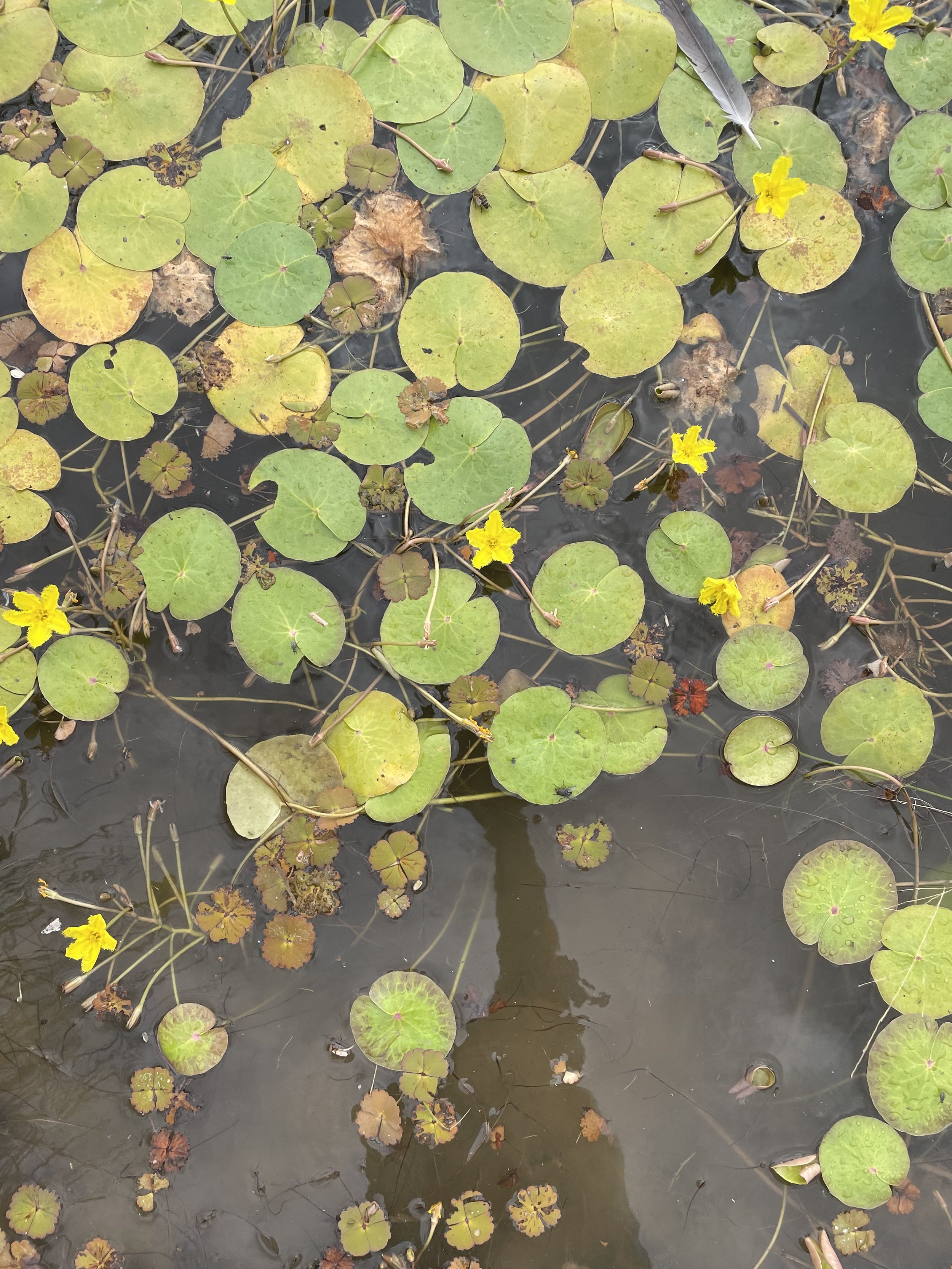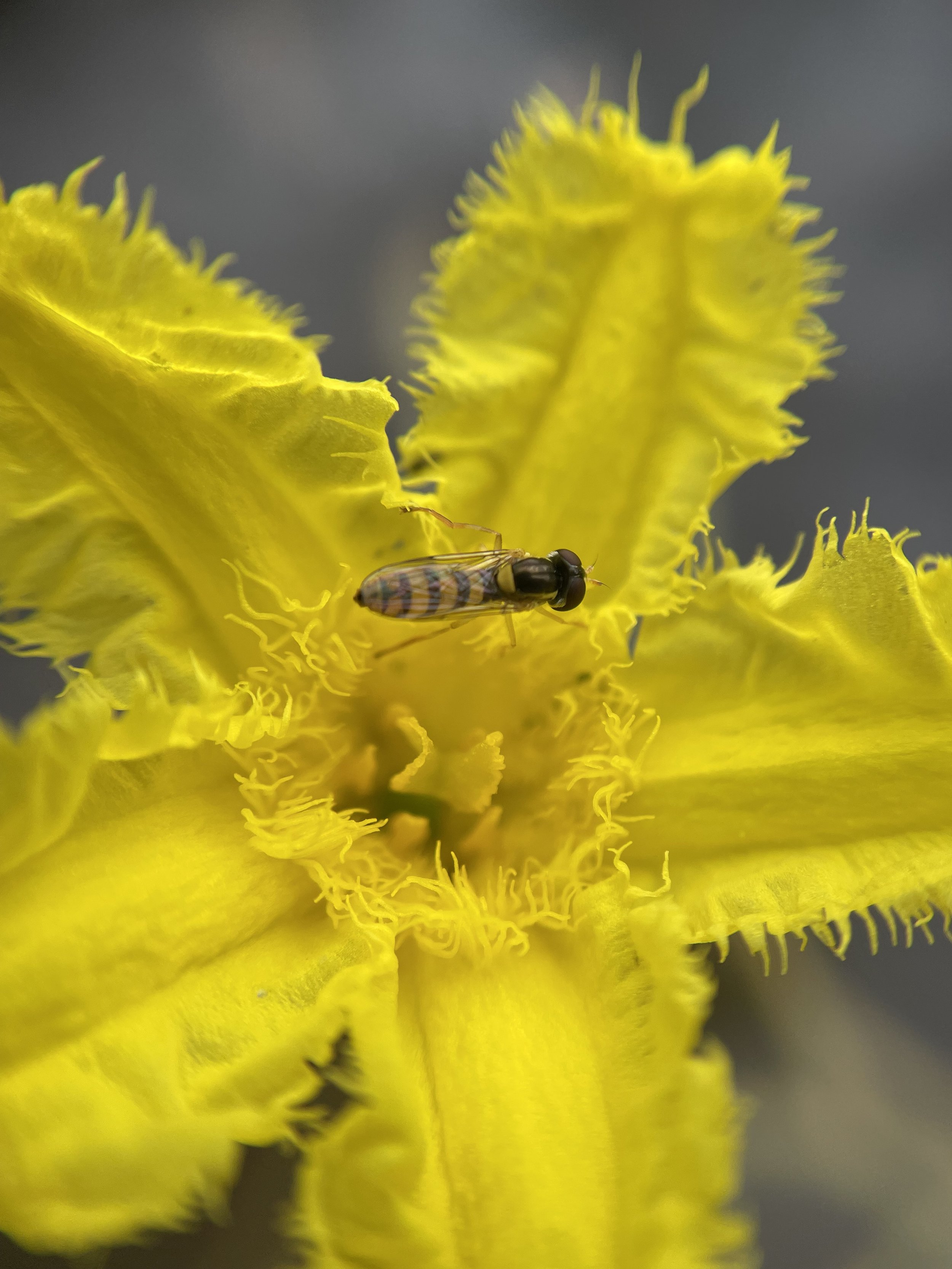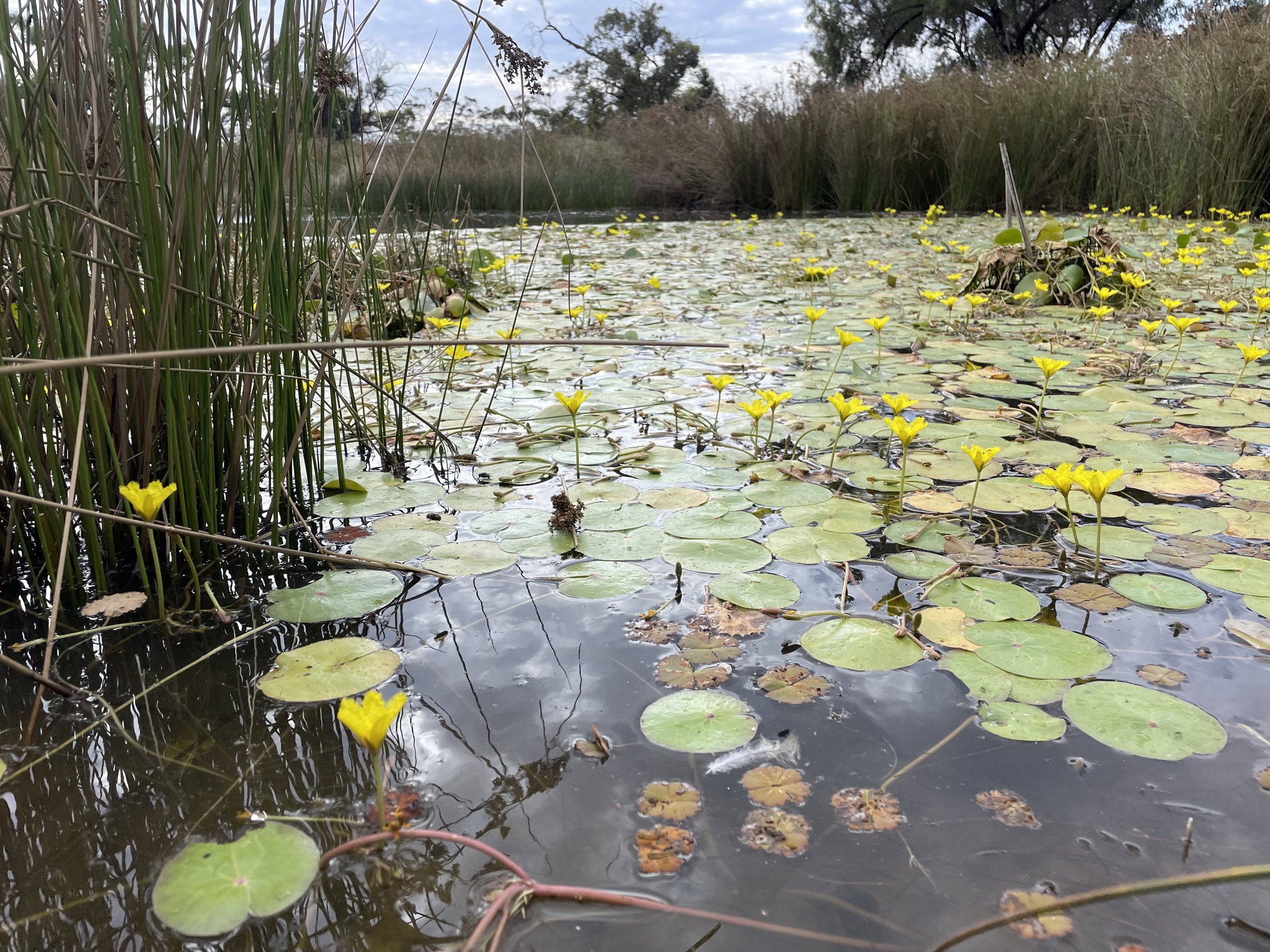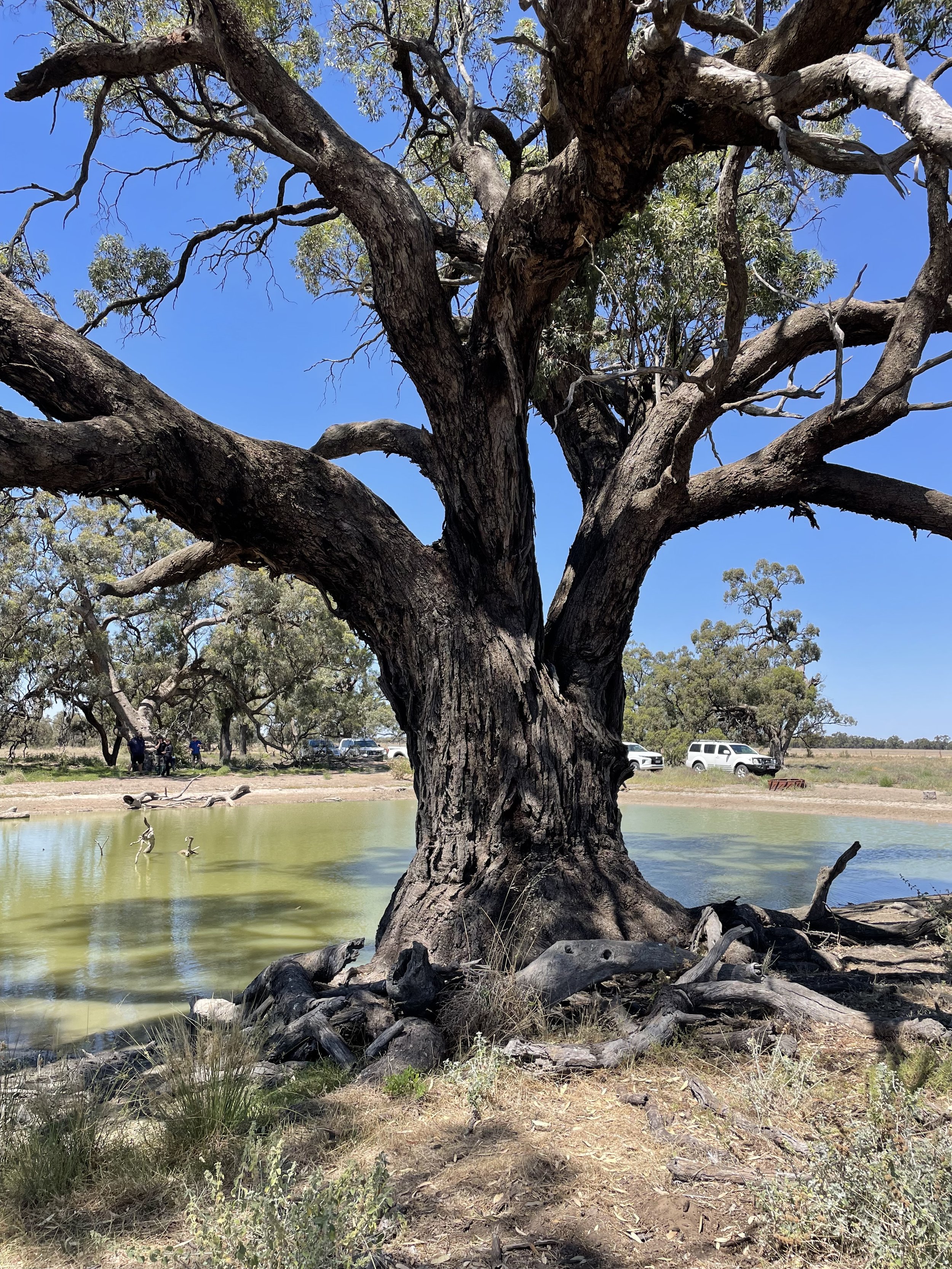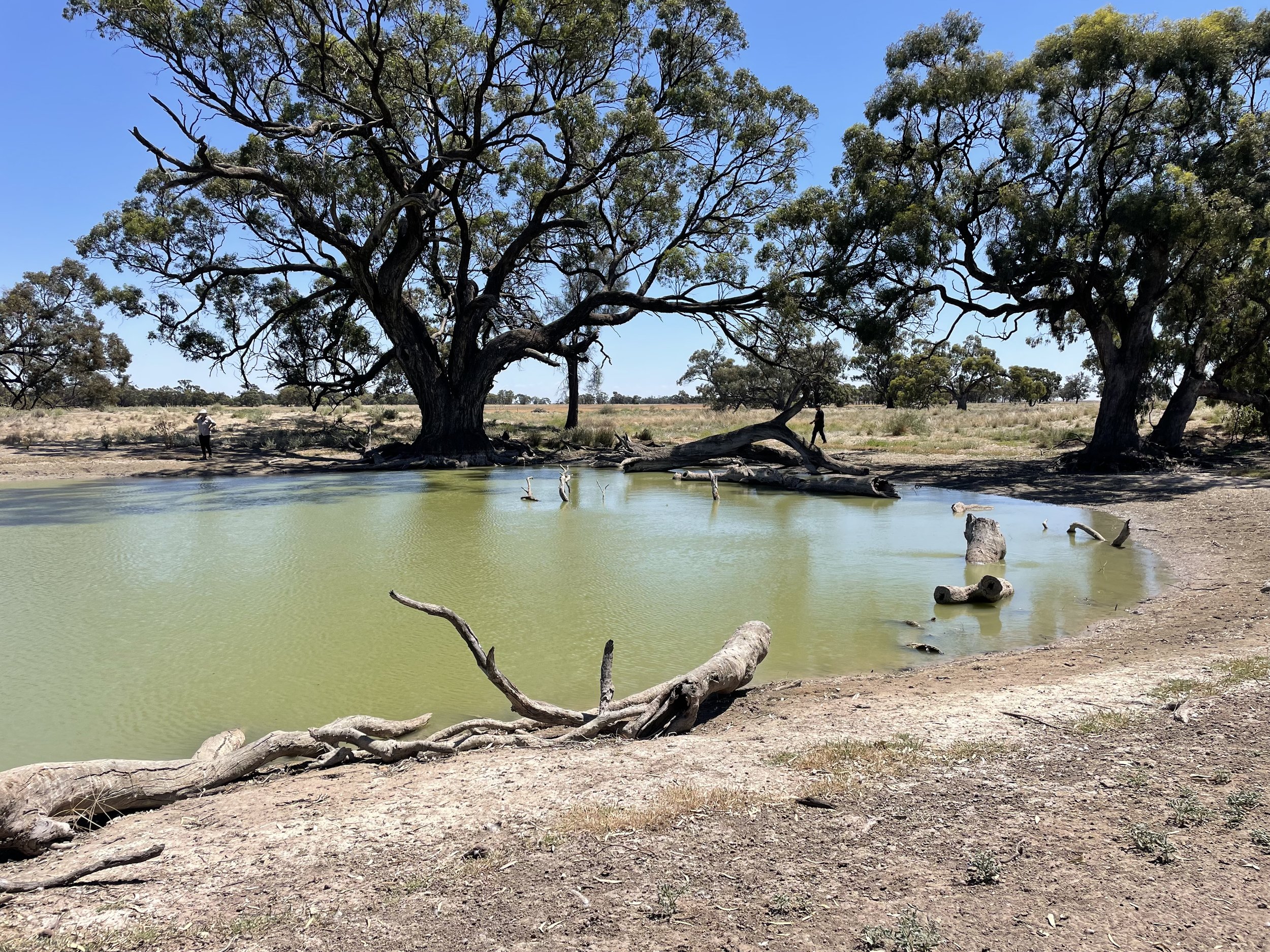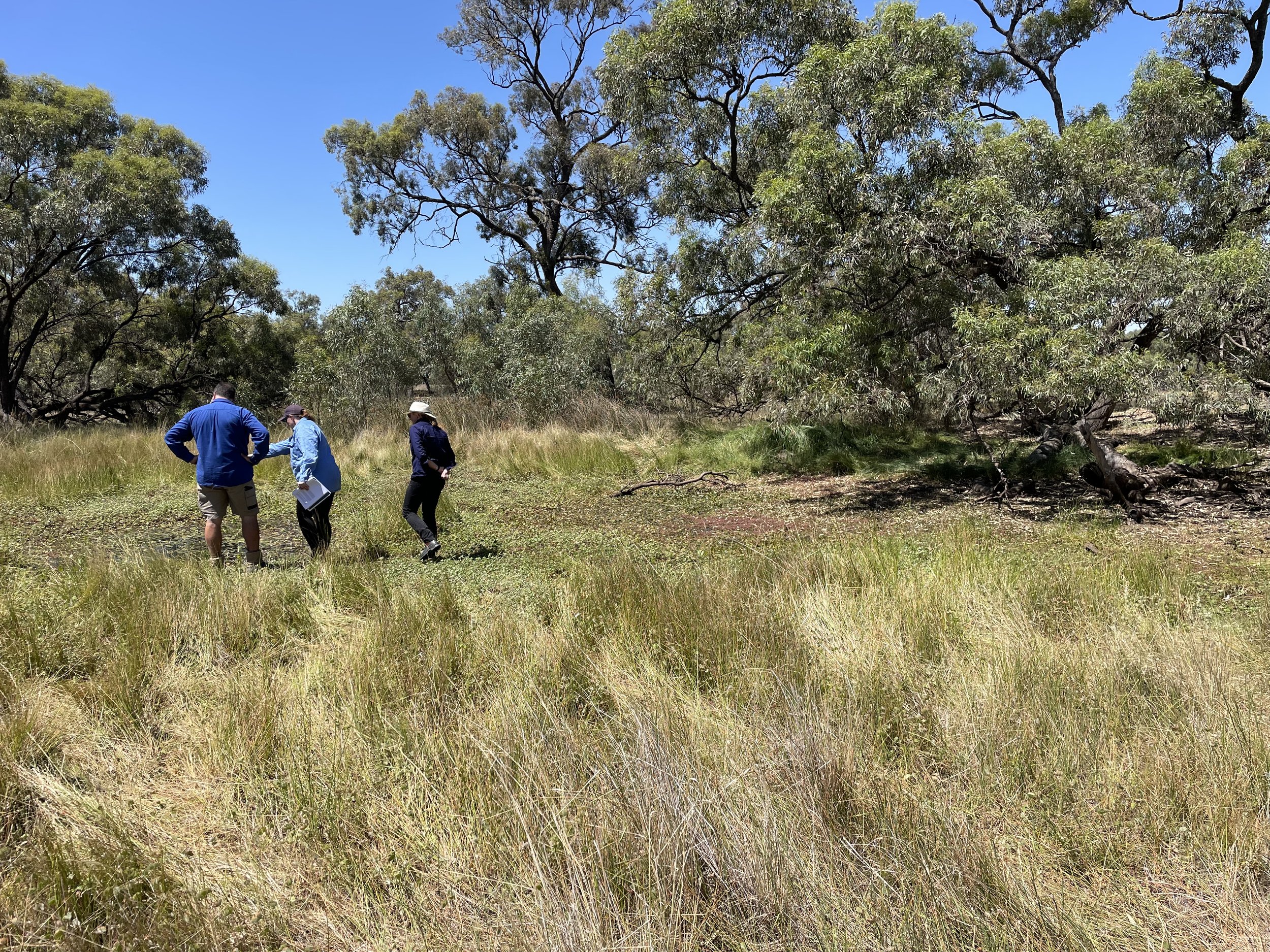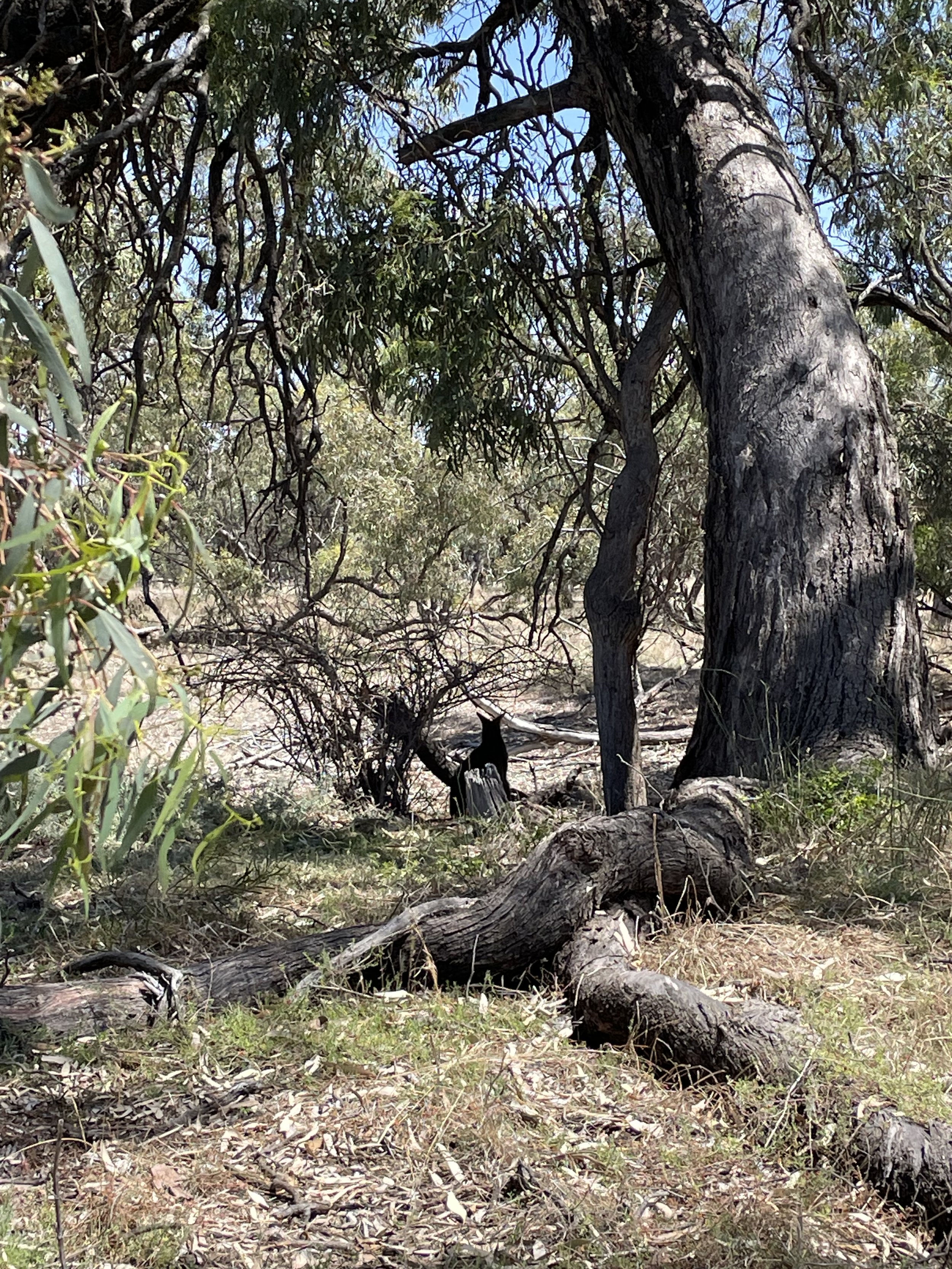Wimmera Mallee Pipeline Wetlands Tour
Yarrilinks Facilitator Alicia and committee member Corinne joined members of the environmental water teams from the Mallee, Wimmera and North Central Catchment Management authorities for a tour of wetlands supplied with environmental water from the Wimmera Mallee Pipeline System (WMPS) in February. The system, managed by GWM Water, can supply environmental water to 52 sites across the three CMA regions. The objective of delivering environmental water is to provide habitat refugia, and breeding and foraging opportunities for frogs and waterbirds.
The purpose of the trip was for community members and partnering agencies to visit 7 of these sites to learn about the environmental water program. There were opportunities to discuss the previous watering year and development of the upcoming 2024/25 Seasonal Watering Proposals (where CMAs apply to the Victorian Environmental Water Holder for environmental water allocations), projects being undertaken at the wetlands, and the seasonal outlook for the next year.
Environmental water allocations are based around available water, so during wetter years, more water is available to go around. Each seasonal watering proposal outlines the allocation of water within a landscape based on many different scenarios (from drought to dry/average/wet year).
Map of the Wimmera Mallee Pipeline Wetlands System (Click to enlarge). From the Victorian Environmental Water Holder.
Site 1: Morton Plains Reserve (Mallee CMA)
This site features significant populations of Cane Grass (Eragrostis infecunda and critically endangered Eragrostis australasica) and Spiny Lignum (Duma horrida subsp. horrida).
Site 2: Davis Dam (North Central CMA)
This is the smallest of North Central CMA’s pipeline wetlands but supports a number of waterfowl, frogs and terrestrial species in a black box woodland.
It’s a propagation site for the critically endangered Marbled Marshwort (Nymphoides spinulosperma), which has now been reintroduced to two other pipeline wetlands.
Site 3: Falla Dam (North Central CMA)
This dam is the site of a recovery project for a critically endangered native fish: the Murray Hardyhead.
This is a small bodied fish native to the Murray Darling Basin. It can tolerate very high salinity, which is unusual for a freshwater fish. It’s a boom and bust species and is at great risk for extinction, but thanks to this site and a few others, North Central CMA is contributing to conservation.
Site 4: Fieldings Dam (Wimmera CMA)
This site has long been used by the landholders for family and community gatherings and is very popular with birds.
Along the banks grows a magnificent black box tree - tour participants remarked it was the largest they’d ever seen. This tree has a culturally significant scar and also houses an eagle nest.
Site 5: Carapunga (Wimmera CMA)
This site is a low depression in remnant bushland and supports a high diversity of vegetation, including threatened species.
As we pulled up, we frightened off a heron and a wallaby (who eventually wandered back to check us out).
Site 6: Roselyn Wetlands/Reids Dam (Mallee CMA)
There is aquatic vegetation within the dam and the site also provides the opportunity to overtop the wetland to water the surrounding black box woodland. A wildlife monitoring camera has been set up at the site and captures many creatures visiting.
Site 7: Tchum Lakes Reserve (Mallee CMA)
This large, shallow wetland can receive up to 100 ML of water. It only receives environmental water infrequently, after very wet years.
Like many mallee wetlands it follows a boom and bust cycle, with wet years bringing multitudes of wading birds, frogs and turtles.
Several landholders from the area of interest enjoyed participating in the trip and providing feedback. A similar opportunity may arise next year, so contact Alicia if you would like to hear about it.
The Wimmera CMA has more information on how they manage environmental water in the catchment on their website:


